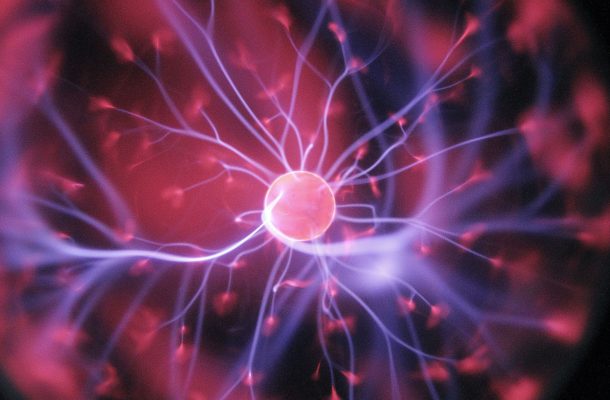Counterpoint by Mark Nicol – When is a science not a science?

The scientist is the only intellectual practitioner afforded pervasive respect, almost unquestioned credibility in the modern intellectual landscape. There is no practise of moral thinking awarded broadscale respect. Vocational philosophers are commonly ignored. This unique veneration extended to the scientist is well founded. It is based upon proven deliverance.
Tell me how this natural phenomenon works. Tell me how to technologically work nature, for this purpose. The modern scientist has proven that he can deliver such explanatory logic, such utilitarian technology. If he cannot deliver, usually the answer is an honest admission of current incapability. So, summarily, the scientist delivers useful truths, and can be trusted.
Contrawise, the modern moral thinker often uses rhetoric, rather than logic to postulate ‘truths’. Failure to draw upon empirical natural evidence creates a school of thinking willfully and divisively ideological, not humbly and unanimously logical. And the modern academic philosopher? Well, that is another story.
The end consequence of this gaping disparity in modernist intellectualism, scientifically brilliant, morally inchoate, philosophically floundering, is production of an enormously potent and ominous technocratic culture. The scientist can play but a small part in fundamental rectification of mankind’s ominous modernist expression, albeit that modern technology has unwittingly underwritten this crisis.
But, towards the end of mankind grasping a sustainable, prosperous, and noble destiny, we must ask these questions of the scientist. What are the limitations of science, as a mode of thinking? What can the scientist deliver, in overarching analyses, to help mankind navigate a path out of our current geoecological crisis? And, when is a science, perhaps, not a science?
Let’s cut to the titillating question first. When is a science not a science?
A ‘hard science’ delivers explanation of some natural phenomenon in a mathematical calculation. If we view cosmic construction as a bottom up assemblage we find quantum integers defining mass/energy dispositions, force interactions, mechanical operations at the ground level.
The neutron has a mass of 1.674 x 10-27 kg, these integral quantum properties: electric charge 0, spin 1/2, isospin -1/2, parity +1, etc. The proton has different numbers, yet all quantum defined, the electron likewise. The four interactional forces exerted between all mass/energy forms are also quantum defined.
The gravitational interaction has a force coefficient of 1, the weak interaction 1025, the electromagnetic interaction 1036, the strong interaction 1038. The conversion of mass to energy phenomenon can be quantum described by the equation e = mc2. Thus, in all matters of bottom up cosmological explanation mathematics is the language that provides accurate accounts.
The constant cosmic dynamic we perceive must be generated by some fine-grained disequilibrium of the four forces active between the cosmic mass/energy set? For, if the tensional forces active between the entire cosmic set could ever be equalized, then, sooner or later, all cosmic action would stop?
This constant cosmic dynamic generates constructive and deconstructive processes. The cosmic dynamic generates certain classic functional species: quantum particle, atomic, molecular, chemical, biological, solar, and galactic systems. The functional species is a mass/energy aggregate resolved with a definite circulating form, wherein component integers share energy in a bonding relationship.
The classic functional species of quantum particle, atom, etc., survives for as long as forces for integration exceed those for disintegration. But no form generated by nature seems to survive forever? Moreover, much or most cosmic matter is not disposed in functional species.
Most functional species generated in the cosmos are composed as mass/energy aggregates not too complex. Operations in atomic systems are readily penetrable via mathematical calculation, because nature’s microscopic integers are disposed as pure quantum forms.
Things become more complex in molecular systems, very complex in chemicals, exceedingly complex in proteins and enzymes, impossibly complex in the biological domain. However, forms and motions in solar and galactic systems, though not quantum defined at those macro-levels, are simple enough to be explained by maths calculation based upon net mass/energy dispositions, interactional forces.
Mathematical calculation satisfactorily explains quantum particle, atomic, and molecular states, can be used to satisfactorily explain solar and galactic operations. But the mathematical tool, or our current deployment of it, fails when we apply it to net operations of biological systems. It is near useless, when we attempt to explain behavioural operations of the most complex biological species we know, mankind.
We may describe the mathematical account of atomic mass/energy disposition and action as an ‘inside out’ account. Via the mathematical tool the scientist penetrates to the core constituents and actions manifest in atomic species, these pure quantum dispositions being readily translatable as mathematical representations.
But when the medical scientist attempts to explain net actions in human physiology we must describe this as a largely ‘outside in’ account. The medical scientist is working upon phenomena vastly more complex, inaccessible to total account via mathematical explanation. The medical scientist must use observations and analyses of net organic actions to determine causal agencies and processes. This is a ‘semi-hard science’, struggling to form definitive explanations.
As for the breed of social scientist, attempting to explain individual or net human behaviours? This is a totally ‘outside in’ endeavour, which cannot possibly calculate all of the mechanical and possibly extra-mechanical factors involved. There is no analytical process availing definitive attribution of causal agencies and processes in respect of human moral behaviours. Thus, we must say that psychology and sociology, etc., are ‘soft sciences’.
The upshot of all this? If we are experiencing problems with human behaviour, personal, or social, it would be errant to think that the accredited social scientist can provide any definitive causal explanation. The legal system may demand certitude, for pragmatic reasons, yet there are accredited sciences, which are barely credible.
Again, in respect of our current and worsening geoecological crisis we are asking way too much of the climate modelling profession. These scientists are attempting to analyse the workings of a super-complex phenomenon. If they can provide reasonable accuracy with broadscale predictions, this feat and deliverance should be appreciated. However, the complex of biosphere problems generated by human action is vastly more complex than any ‘global warming’ or ‘climate change’ description entails.
Perhaps we should be aware that classical scientific focus is subject discrete, in a sense myopic. There is no cultivated breed of science, which looks at, or can look at the whole picture of man/biosphere interactions. Consequently, there are several factors, which have reduced the vast complex of the man/biosphere problem down to just a blinkered ‘climate change, anthropogenic CO2’ reckoning.
Firstly, populist thinking always demands simple explanations for problems, simple cures. Say no more. Secondly, by narrowing the man/biosphere problem down to a ‘climate change caused by anthropogenic CO2 emission’ reckoning, entrepreneurs have found a way to make a buck out of eco-technologies reducing carbon footprints. This is fine. It also puts to bed the only real cure for our geoecological crisis – methodical depopulation, reduction of the total human footprint.
Entrepreneurial culture is dead against that, because it would spell an end to the constant growth economy. But many in the scientific profession play their part, in perpetuating our ever worsening man/nature problem.
There is a breed of scientist, whom, for reasons of myopic focus and/or of pecuniary self-interest, is only interested in positing small picture analyses. As per, let’s take a 5 year study of this frog species to determine if, and perhaps why it is disappearing. It’s a paid gig, it’s accredited as a scientific discipline, the end thesis receives its small intellectual ovation, arouses a small moral affectation.
Meanwhile, we all know why the frogs are dying. And the scientist with three kids is certainly playing his or her part, whilst contributing nothing of fundamental worth to rectification of the large scale problem.
Perhaps we have revealed two inherent limitations of current scientific practice, the first being subject discrete focus. Of course subject discrete focus is the only means, by which the scientist can glean accurate understanding of a specific phenomenon. But, when we experience a crisis problem with a convoluted phenomenon, as complex as our current man/biosphere interaction? It is then that the myopic focus of classical modern science fails to deliver the requisite intelligence.
The second inherent limitation of scientific practice, fundamental to the limitation of the intellectual discipline itself, is its amoral perspective. Inherently, the scientist deals with how questions, not why questions. Thus, faced with a phenomenon that intrinsically raises moral or why questions, the discipline bound scientist will offer nothing on that front.
The man/biosphere crises we face is extraordinarily complex. It arises out of perilous anthropocentric thinking, action. We need one new discipline of science focused upon broadscale analyses, affirming the one simple logistical solution to the problem – methodical depopulation. And we need scientists who do not use professional cloaks to eschew moral responsibility.
Mark Nicol is based in Adelaide and has written four environmentalist books offering his perspectives on cosmology, human history and economic, political, religious, and educational institutions.














